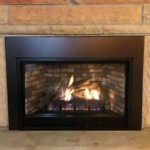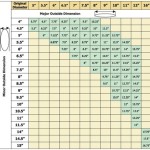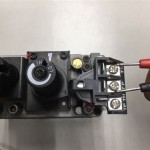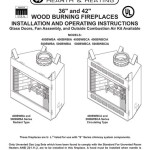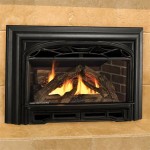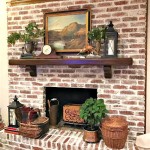What is a Heat Circulating Fireplace Called?
Fireplaces have long been a source of warmth and ambiance in homes. While traditional fireplaces release heat directly into the room, some modern designs incorporate technology to distribute heat more effectively. These fireplaces, known as heat circulating fireplaces, utilize various methods to ensure that the heat generated by the fire reaches all corners of the room and beyond.
Understanding the different types of heat circulating fireplaces can be an essential step in choosing the right one for your home. This article will delve into the terminology surrounding these fireplaces, exploring the various designs and mechanisms that contribute to their heat distribution capabilities. From forced-air systems to radiant heat, each type offers distinct advantages and considerations for homeowners.
Types of Heat Circulating Fireplaces
Heat circulating fireplaces can generally be categorized into two primary types: forced-air fireplaces and radiant fireplaces.
Forced-Air Fireplaces
As the name suggests, forced-air fireplaces employ a blower system to circulate heated air throughout the room. These fireplaces often feature a built-in fan that draws cool air from the room, passes it over the heat source (the fire), and then blows the warmed air back into the room. This forced-air circulation ensures that the heat is distributed evenly, creating a comfortable and consistent temperature throughout the space.
Radiant Fireplaces
On the other hand, radiant fireplaces generate heat that travels directly through the air, warming surfaces and objects in its path. These fireplaces typically feature a large glass front that allows for maximum heat radiation. The heat from the flames and the surrounding materials is absorbed by the glass and then radiated outward, creating a warm and cozy atmosphere.
Key Features of Heat Circulating Fireplaces
Regardless of the specific type, heat circulating fireplaces are designed to enhance efficiency and maximize heat distribution. Here are some key features that distinguish them from traditional fireplaces:
Blower System
Forced-air fireplaces utilize a blower system to circulate heated air. The blower is typically located near the firebox and can be controlled by a thermostat or manual switch. Some models even offer multiple speed settings to adjust the airflow and heat output as needed.
Heat Exchanger
Many heat circulating fireplaces incorporate a heat exchanger, which is a metal component designed to transfer heat from the fire to the air. The heat exchanger enhances efficiency by capturing a greater amount of heat from the fire, ensuring that more heat is transferred to the surrounding air.
Insulated Firebox
Heat circulating fireplaces often feature an insulated firebox, which helps to prevent heat loss and maintain a consistent temperature. Insulation materials, such as ceramic fiber or refractory bricks, are used to line the firebox, reducing the amount of heat that escapes through the walls.
Advantages of Heat Circulating Fireplaces
Heat circulating fireplaces offer several advantages over traditional fireplaces, making them a popular choice for modern homes. Here are some key benefits:
Improved Heat Distribution
The most significant advantage of heat circulating fireplaces is their ability to distribute heat more effectively. The forced-air or radiant systems ensure that the heat reaches all corners of the room, creating a more comfortable and consistent temperature throughout the space.
Increased Efficiency
By capturing and circulating more heat generated by the fire, heat circulating fireplaces are generally more efficient than traditional fireplaces. This translates to lower energy consumption and reduced heating costs.
Enhanced Safety
Heat circulating fireplaces often incorporate safety features, such as a blower that shuts off automatically when the fireplace is not in use. This helps to prevent accidental overheating and potential fire hazards.
Considerations for Choosing a Heat Circulating Fireplace
When choosing a heat circulating fireplace, it is important to consider several factors, including:
Room Size
The size of the room is a crucial factor in determining the appropriate heat output of the fireplace. A larger room will require a fireplace with a higher heat capacity to maintain a comfortable temperature.
Fuel Type
Heat circulating fireplaces are available in various fuel types, including wood, gas, and electric. Each fuel type has its own advantages and disadvantages, and the selection should be based on personal preference and the availability of fuel sources.
Installation Requirements
Installation requirements vary depending on the specific type of fireplace and the local building codes. It is essential to consult with a qualified professional to ensure that the fireplace is installed correctly and safely.
In conclusion, heat circulating fireplaces offer a modern and efficient way to enjoy the warmth and ambiance of a fireplace. By understanding the different types and features of these fireplaces, you can make an informed decision that best suits your needs and preferences. From forced-air systems to radiant heat, these innovations ensure that your fireplace will not only elevate the aesthetics of your home but also provide a comfortable and inviting atmosphere for years to come.

Fireplace As Heatingsystem Called Thermo Exclusive Property Blog

Majestic Sovereign 36 Heat Circulating Wood Burning Fireplace

Fireplace As Heatingsystem Called Thermo

Majestic Sovereign Heat Circulating Wood Burning Fireplace

Heatilator Accelerator 42

Heatilator Fireplaces Inserts Home And Hearth Wood Pellet Stoves S Service

Heatilator Accelerator 36

Majestic Sovereign Heat Circulating Wood Burning Fireplace Sa36c Sa42c

Heatilator Accelerator A42 Wood Fireplace At Obadiah S Woodstoves

What Are The Types Of Fireplace Inserts Dc Service
Related Posts

